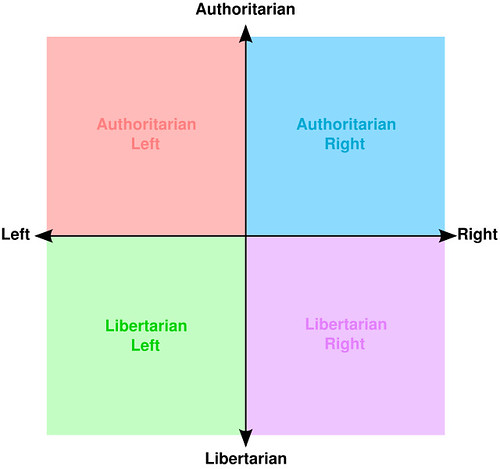“All two-valued systems are false.” — Gene Wolfe
Consider the left-right continuum of political thought. It often strikes me as tired and played-out. Yet at other times it seems quite relevant. It certainly is one-dimensional, by definition, and thus it can’t begin to reflect the rich variation and nuances of political philosophy. For example, Nazis and Bolsheviks would be at opposite ends of this spectrum, but don’t they have a lot in common? Something important is missing.
At some point during my undergraduate years, a professor introduced me to a dual-axis model of politics. It doesn’t abandon the well-known left-right continuum. It simply adds another dimension, call it an up-down continuum. Up represents a more authoritarian tendency; down represents the opposite inclination, which might be called libertarian. (Note the small “l” to avoid confusion with the Libertarian Party.) I’m not sure, but I think this model may have first been articulated by the famous psychologist Hans Eysenck.
The result looks something like this:
This clears up some things. Hitler and Stalin would both be at the top of the chart, but in opposite corners.
Of course you could get even more complex. You could add an urban-rural axis or a pacifist-militant axis, to name just a couple. But that quickly gets cumbersome. This dual-axis model seems to work pretty well for me. I’ve carried this mental construct around for the last twenty years, and I find it helpful. I just wish more people knew about it.
Well, turns out there’s a website that allows you to take a short quiz and plot yourself on this model. No, I’m not talking about The World’s Smallest Political Quiz. I’m referring to The Political Compass.
If you haven’t already done so, hie thee to their website and take the test. See where they map you. Does it correspond with where you’d have plotted yourself?
